Wifi trigger and Wifi Mesh: What is the difference?
Looking for a device to help increase your current WiFi connection? Here is a comparison of the difference between a WiFi trigger and a WiFi Mesh network to help you choose the right product.
Optimize your WiFi connection
A lot of people want to solve the problem of slow network connection, will the WiFi Mesh network solve the problem, even in a small apartment in Manhattan? It must be said before that the WiFi and Mesh jacks are not magic tools that can solve all cases. If your problem is due to traffic congestion in your neighborhood, due to the location of the router or cheap Internet package, no tool can help you.
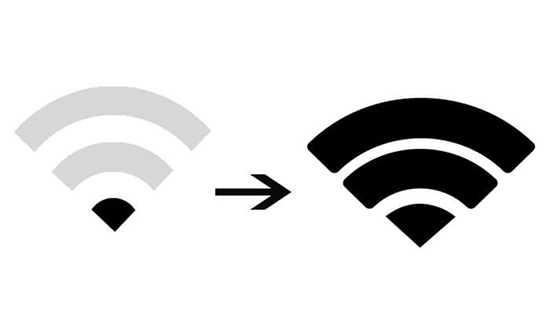 Weak WiFi signal made many people uncomfortable
Weak WiFi signal made many people uncomfortable 'Mesh and WiFi drivers are primarily designed to solve a single problem: weak signal strength,' says Joel Crane, wireless network expert and WiFi engineer at Juniper Networks. 'Before investing in the Mesh system, check if you have any problems with your WiFi signal.'
Crane recommends using a free tool called InSSIDer Lite to create an indoor signal map. When you use that tool around the house, it will take note of places with poor signals. 'The signal is about -67 to -30 dBm is stable,' Crane said. 'If it is below -67 or -70 dBm, the performance will start to decrease. Below -80 dBm, things may not work anymore. ' (Remember that these are negative numbers, so -80 is lower than -67 dBm.)
If there are no dead spots in your home, the problem might be with the Internet plan you're using, not because of the WiFi network. If you really have a dead spot, make sure your home router is in a well-ventilated location, probably in the middle of the house. The router, which is located at the far end of the house, is located deep in the closet, you can solve the problem by moving it to an open place instead of buying a new set.
The WiFi trigger almost just repeats the signal
If you want to expand WiFi, you need to choose between the jack and the Mesh system. 'The WiFi router is actually just connecting to your home wireless network, creating a new name, and relaying traffic to the router,' Crane explained. 'That means two network names will appear: one is from the main router and the other is from a WiFi router.'
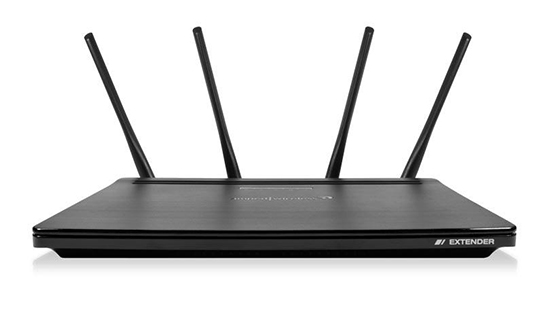 WiFi jack
WiFi jack You may have encountered this situation before, in a house where the upper level network name is 'SmithHouse' but the lower level floor is 'SmithHouse_EXT'. Your device will connect to a single network until it is out of range. This means wherever you go, your WiFi is slow unless you constantly change the network when changing seats. This is really an inconvenience.
Repeating the entire WiFi signal is not an ideal - this trigger is just retrieving network packet information and replaying it. There is no internal logic to help bring these network packets to the right path.
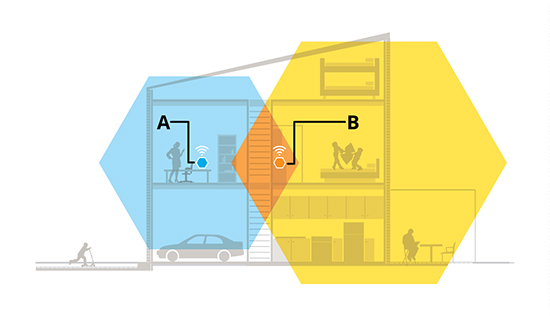 How WiFi trigger works
How WiFi trigger works More importantly, WiFi controllers often slow things down. Wireless networks are 'half duplex', meaning that wireless devices cannot send and receive information at the same time - all devices on the same channel take turns working. WiFi jacks aggravate the problem, because they have to repeat everything they 'hear' - like someone following you all day, repeating everything you say before someone else opens it.
Finally, controlling this WiFi jack is very tiring. Many routers require you to go to a website to set up or download new updates, and if your home WiFi router is not using the same carrier as the router, you will have to work with two different software. In many cases, the software may be old and complex.
Of course, there are exceptions. Some WiFi drivers have state-of-the-art software and easily overcome bandwidth problems when paired with the same manufacturer. But there's no guarantee that your old router will allow it, so at this point the difference between the Mesh network trigger is a little more obvious.
Mesh network works smoothly, more efficiently and quickly updated
Unlike WiFi controllers that add to an existing network, Mesh simply replaces the entire WiFi in your home. You can put them in parallel with your current router, but few do so (unless your ISP requires it, like the AT&T U-Verse type). They are designed to replace complex router-extender systems with a series of smaller units located around your home.
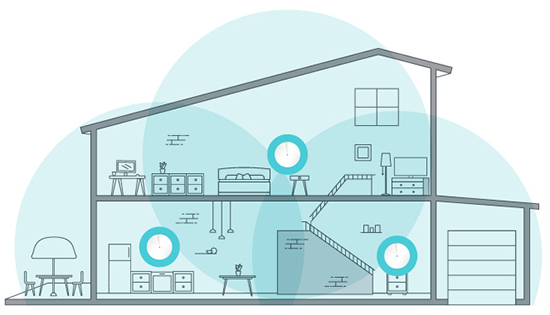 How the Mesh system works
How the Mesh system works This shows a much better advantage than traditional WiFi controllers. Mesh systems like eero, Google Nest WiFi and Linksys Velop use Mesh access points, meaning they all recognize each other's existence and can forward traffic around the network when needed. They all share the same network name, WiFi devices like phones or laptops will choose from Mesh access points to connect. This makes Mesh work better than other WiFi drivers.
Moreover, since all Mesh units use the same software, they can forward traffic more intelligently. This means that if you use the second connection at the end of the house, it will only replay the network packet if the device uses that connection.
In addition, Mesh can solve some speed problems by using transceivers to send and receive information continuously. They can use a 2.4GHz channel to communicate with the devices and use the 5GHz channel to forward data to the remaining Mesh connection points in the system.
Some Mesh systems have three receivers. One is dedicated to transmitting communication to the router, the other two are for accessing computers, phones and other devices. This is really useful if you use multiple wireless devices indoors.
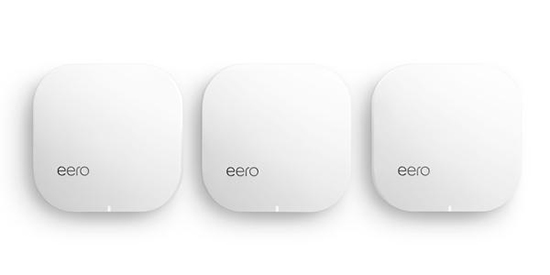 Eero Mesh system set
Eero Mesh system set If it is possible to buy a tri-band type, do so. You can connect Mesh access points with Ethernet for the best speed, but if your home is not using Ethernet, a dual band Mesh system or traditional WiFi jack will suffice.
Finally, setting up and controlling your network is much easier with modern Mesh systems. Instead of going to a series of websites, you can control the entire network from a friendly phone app. A lot of Mesh systems update firmware automatically, which is a huge improvement over most current routers. They always require you to check for updates, download data on the manufacturer's website and send it to the router manually. Most users today do not want to perform such fussy jobs, so they accept to live with cyber security threats.
With an all-in-one system, you will receive regular updates, improved usability and security. This is a giant step.
 About inSSIDer software
About inSSIDer software How fast is Wifi 6?
How fast is Wifi 6? How to hide WiFi network in Windows 10
How to hide WiFi network in Windows 10 Laptop error on WiFi and how to fix it successfully 100%
Laptop error on WiFi and how to fix it successfully 100% How to turn off WiFi network Viettel, FPT remotely
How to turn off WiFi network Viettel, FPT remotely Why can't I access tplinkwifi.net?
Why can't I access tplinkwifi.net?